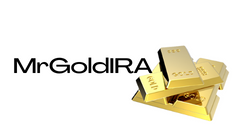Bitcoin, the pioneering and most widely recognized cryptocurrency, has recently captured attention by skyrocketing to a new all-time high exceeding $72,000. This remarkable surge has reignited interest in Bitcoin as a promising investment opportunity, prompting individuals to contemplate the implications for their financial future.
The Significance of Bitcoin's Price Surge
Investors may interpret this surge as a confirmation of Bitcoin's potential as a stable long-term investment and may consider increasing their cryptocurrency allocation within their investment portfolio. However, the rapid escalation in price may also evoke concerns regarding potential volatility and the sustainability of such unprecedented gains, urging investors to conduct a thorough risk assessment before making investment decisions.
Understanding Market Dynamics and Risks
Although Bitcoin has exhibited substantial growth over the years due to factors such as heightened institutional adoption, amplified investor interest, and broader acknowledgment by traditional financial entities, it remains a highly volatile asset. This susceptibility to fluctuations influenced by supply and demand, regulatory measures, and media hype is not unique to Bitcoin but is also observable in traditional investment channels.
Strategies for Integrating Bitcoin into Wealth Preservation
Despite Bitcoin's unpredictable nature, many are drawn to it due to its function as a hedge against inflation. While conventional currencies are susceptible to devaluation through excessive printing, Bitcoin's limited supply renders it impervious to inflation, positioning it as a safeguard against economic instabilities.
Diversify Your Investments
Investors are advised to diversify their investment portfolios by allocating a portion to Bitcoin and other cryptocurrencies. This diversification strategy helps mitigate risks and enables investors to leverage the high return potential of Bitcoin. Stablecoins, crypto assets pegged to stable entities like the US dollar, can serve as a buffer against Bitcoin's price volatility.
Take Calculated Risks
To effectively protect and grow wealth, investors must be willing to undertake calculated risks for sustained profitability. Strategies such as systematic savings, diversification across asset classes, and integrating Bitcoin into asset protection schemes can enhance financial growth prospects. Furthermore, investors should remain vigilant against fraudulent activities exploiting the burgeoning interest in cryptocurrencies.
Educate Yourself
Prior to making financial decisions, it is imperative to educate oneself about the market, particularly Bitcoin's distinctive attributes. Conduct comprehensive research on the technology underpinning this cryptocurrency, its market trends, and potential impact on traditional financial systems. Comparing Bitcoin's value proposition with traditional assets like gold and stocks can facilitate informed decision-making to optimize financial gains.
Regulate Your Emotions
Maintaining emotional composure and adhering to a well-thought-out investment strategy is essential. Avoid impulsive decisions triggered by market fluctuations or fear of missing out (FOMO). Embracing a long-term investment approach rather than attempting to time the market fosters a rational and stable incorporation of Bitcoin into wealth management practices.
Utilize Dollar-Cost Averaging
Implementing dollar-cost averaging involves investing a fixed amount at regular intervals, irrespective of market fluctuations. This method helps smooth out market volatilities and potentially diminish vulnerabilities. Its adaptability to Bitcoin and other cryptocurrencies renders it a practical approach to portfolio diversification.
Implement Tax-Loss Harvesting
Tax-loss harvesting entails selling investments at a loss to offset capital gains, thereby reducing tax liabilities. Given Bitcoin's volatility, this strategy can be advantageous when integrated into investment portfolios. Adherence to IRS regulations and consultation with tax professionals are recommended to avoid legal complications.
Stick to a Long-Term Plan
Resisting the allure of short-term gains driven by Bitcoin's price fluctuations is crucial for effective portfolio management. Adhering to a long-term financial strategy safeguards against emotional responses to market shifts, fostering a strategic and sustainable approach to incorporating Bitcoin into investment portfolios.
Future Outlook for Bitcoin
Many experts anticipate that Bitcoin's surge beyond $72,000 merely marks the inception of its growth potential. Projections by industry leaders, such as the CEO of Ark Invest, suggest a future price trajectory exceeding $1 million per Bitcoin by 2030. While precise predictions are challenging, Bitcoin has undeniably solidified its status as a credible and valuable asset class.
Bitcoin's recent upsurge reinforces its legitimacy as a viable investment avenue. With increasing institutional acknowledgment and sustained investor interest, Bitcoin is poised for further substantial growth. By comprehending associated risks and adopting a well-informed approach to integrating Bitcoin into wealth preservation strategies, investors can optimize the potential benefits offered by this digital asset.
Thorough research, prudent deliberation, and vigilant monitoring of Bitcoin's developments are imperative for making informed investment decisions and maximizing returns. By incorporating Bitcoin into their investment blueprint with a focus on long-term financial growth and stability, individuals can navigate the evolving landscape of digital assets with confidence.
Frequently Asked Questions
How is gold taxed in Roth IRA?
An investment account's tax rate is determined based upon its current value, rather than what you originally paid. Any gains made by you after investing $1,000 in a stock or mutual fund are subject to tax.
But if you put the money into a traditional IRA or 401(k), there's no tax when you withdraw the money. Taxes are only charged on capital gains or dividends earned, which only apply to investments longer than one calendar year.
Each state has its own rules regarding these accounts. Maryland is an example of this. You must withdraw your funds within 60 calendar days of turning 59 1/2. Massachusetts allows you up to April 1st. New York offers a waiting period of up to 70 1/2 years. To avoid penalties, you should plan ahead and take distributions as soon as possible.
Is buying gold a good way to save money for retirement?
While buying gold as an investment may seem unattractive at first glance it becomes worth the effort when you consider how much gold is consumed worldwide each year.
Physical bullion bar is the best way to invest in precious metals. There are many ways to invest your gold. Research all options carefully and make an informed decision about what you desire from your investments.
If you don’t need a safe place for your wealth, then buying shares of mining companies or companies that extract it might be a better alternative. Owning gold stocks should work well if you need cash flow from your investment.
You can also put your money in exchange traded funds (ETFs). These funds allow you to be exposed to the price and value of gold by holding gold related securities. These ETFs may include stocks that are owned by gold miners or precious metals refining companies as well as commodity trading firms.
What Precious Metals Can You Invest in for Retirement?
The best precious metal investments are gold and silver. They are both simple to purchase and sell, and they have been around for a long time. If you want to diversify your portfolio, you should consider adding them to your list.
Gold: The oldest form of currency known to man is gold. It is stable and very secure. It is a good way for wealth preservation during uncertain times.
Silver: Investors have always loved silver. It's a good choice for those who want to avoid volatility. Silver tends to move up, not down, unlike gold.
Platinum: This precious metal is also becoming more popular. It's resistant to corrosion and durable, similar to gold and silver. However, it's much more expensive than either of its counterparts.
Rhodium. Rhodium is used as a catalyst. It is also used in jewelry-making. It is also very affordable in comparison to other types.
Palladium: Palladium is similar to platinum, but it's less rare. It's also less expensive. It's a popular choice for investors who want to add precious metals into their portfolios.
Statistics
- If you accidentally make an improper transaction, the IRS will disallow it and count it as a withdrawal, so you would owe income tax on the item's value and, if you are younger than 59 ½, an additional 10% early withdrawal penalty. (forbes.com)
- This is a 15% margin that has shown no stable direction of growth but fluctuates seemingly at random. (smartasset.com)
- If you take distributions before hitting 59.5, you'll owe a 10% penalty on the amount withdrawn. (lendedu.com)
- Indeed, several financial advisers interviewed for this article suggest you invest 5 to 15 percent of your portfolio in gold, just in case. (aarp.org)
- Instead, the economy improved, stocks rebounded, and gold plunged, losing 28 percent of its value in 2013. (aarp.org)
External Links
forbes.com
- Gold IRA: Add some sparkle to your retirement nest egg
- Understanding China's Evergrande Crisis – Forbes Advisor
finance.yahoo.com
cftc.gov
bbb.org
How To
The best place to buy silver or gold online
You must first understand the workings of gold before you can purchase it. The precious metal gold is similar to platinum. Because of its resistance to corrosion and durability, it is very rare. It's hard to use, so most people prefer buying jewelry made out of it to actual bars of gold.
There are two types today of gold coins. One is legal tender while the other is bullion. Legal tender coins are designed for circulation in a country. They often have denominations like $1 or $5 or $10.
Bullion coins are minted for investment purposes only, and their values increase over time due to inflation.
They are not exchangeable in any currency exchange system. For example, if a person buys $100 worth of gold, he/she gets 100 grams of gold with a value of $100. Each dollar spent earns the buyer 1 gram gold.
You should also know where to buy your gold. There are many options for buying gold directly from dealers. First, you can visit your local coin store. You might also consider going through a reputable online seller like eBay. You may also be interested in buying gold through private sellers online.
Private sellers are individuals who offer to sell gold at retail or wholesale prices. Private sellers charge a 10% to 15% commission per transaction. You would receive less money from a private buyer than you would from a coin store or eBay. However, this option is often a great choice when investing in gold since it gives you more control over the item's price.
The other option is to purchase physical gold. You can store physical gold much more easily than you can with paper certificates. However, it still needs to be safe. You need to make sure that your physical gold is safe by storing it in an impenetrable container like a vault or safety depositbox.
You can either visit a bank, pawnshop or bank to buy gold. A bank will provide you with a loan that allows you to purchase the amount of gold you desire. Customers can borrow money from pawnshops to purchase items. Banks typically charge higher interest rates than pawn shops.
The final option is to ask someone to buy your gold! Selling gold is also easy. A company such as GoldMoney.com can help you set up a simple bank account and get paid immediately.
—————————————————————————————————————————————————————————————-
By: Miles Oliver
Title: Bitcoin's Surge to All-Time High: A Guide to Maximizing Your Investment Potential
Sourced From: bitcoinmagazine.com/markets/bitcoins-surge-to-all-time-high-what-it-means-for-your-investment-future
Published Date: Thu, 21 Mar 2024 16:00:00 GMT



















